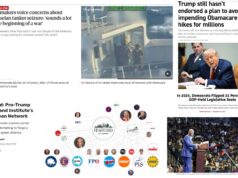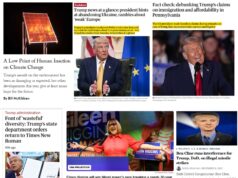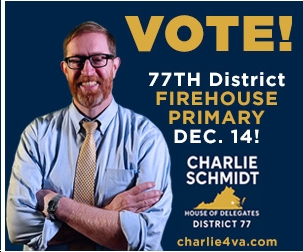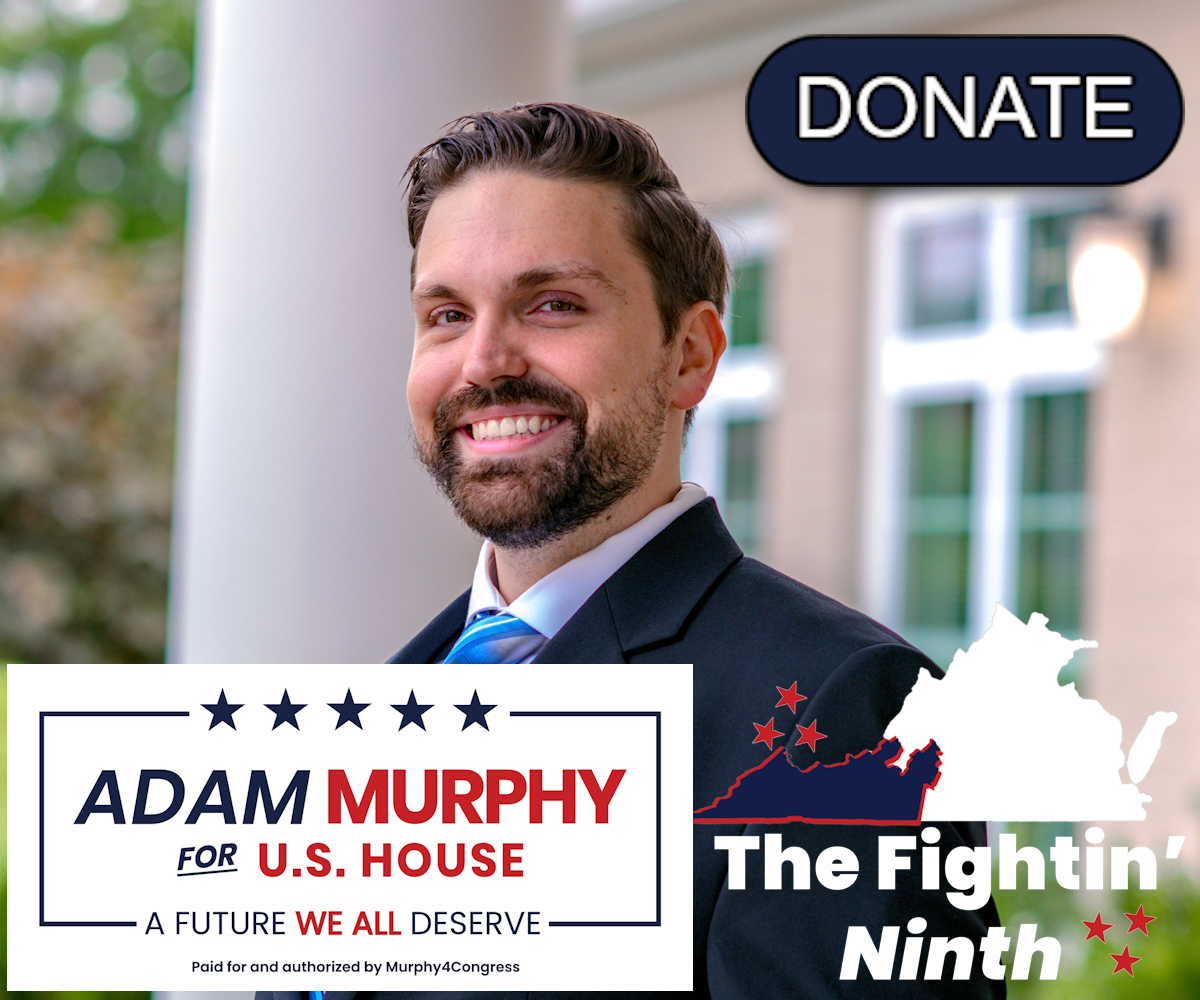The following analysis is by former/long-time (1983-2014) Arlington County Treasurer Frank O’Leary (D), who has been doing these forecasts for many, many elections. For instance, just prior to the 2017 gubernatorial election, O’Leary predicted that “Democratic turnout throughout the Commonwealth should be considerably greater than in prior years” (which turned out to be true, with 2.6 million total votes cast and Ralph Northam winning by 9 percentage points), as well as “‘many happy returns’ for a number of Democratic candidates seeking admission to the House of Delegates” (which also turned out to be true, with Democrats picking up 15 House of Delegates seats, going from 34 to 49 Democrats in the House of Delegates). So with that, what are O’Leary’s forecasts for the 2021 Virginia gubernatorial election? Here are a few highlights:
- For Arlington County, O’Leary is “venturing a ‘guesstimate’ of about 87,000 (56.7%). Only slightly better numerically than 2017, when 59.4% voted for a turnout of 85,382.”
- “There is a strong correlation between Arlington’s percent turnout and that of the Commonwealth. Should that continue, statewide turnout should be between 2,650,000 and 2,900,000 versus 2,612,000 in 2017.”
- “Given that McAuliffe seemingly has a slight edge at this point, I am going to award him slightly more than half of the 5.1% [who are currently undecided], or 2.6%. This means that, in my book, Democrat Terry McAuliffe will win the race for Governor of the Commonwealth of Virginia with 50.5% of the vote to 48.4% for Republican Glenn Youngkin.”
*******************************
Predicting Electoral Outcome in Virginia for 2021: The Past as Prologue
The following table summarizes voter turnout in Arlington for Gubernatorial Years from 1989 through 2017.
| Summary of Arlington Turnout for Gubernatorial years 1989-2017 | |||||
| Year | Active* Registration | Turnout | Absentee | %Active Turnout | %Absentee |
| 1989 | 89,434 | 53,865 | 2,011 | 60.2% | 3.7% |
| 1993 | 93,011 | 52,432 | 2,015 | 56.4% | 3.8% |
| 1997 | 98,018 | 50,155 | 2,005 | 51.2% | 4.0% |
| 2001 | 108,910 | 53,302 | 2,135 | 48.9% | 4.0% |
| 2005 | 113,274 | 57,217 | 3,294 | 50.5% | 5.8% |
| 2009 | 131,548 | 56,713 | 4,611 | 43.1% | 8.1% |
| 2013 | 137,143 | 67,762 | 7,304 | 49.4% | 10.8% |
| 2017 | 143,816 | 85,382 | 12,245 | 59.4% | 14.3% |
*Prior to the introduction of “Motor Voter” in 1996, and the consequent swelling of the voter rolls with persons who entered DMV seeking only a driver’s license, there was no distinction between “Total” and “Active” voter registration.
Inspired by the candidacy of L. Douglas Wilder in 1989, 60.2% of Arlington’s voters streamed to the polls in a record turnout to help elect the nation’s first Black governor. (The prior local record of 60.0% turnout had been set by then Presidential hopeful Chuck Robb in 1981.) After 1989, percent turnout steadily declined as new registrants tended to focus only on elections for the Senate or Presidency (leading me to term them “Federalists”). The abrupt drop in 2009 was more a result of Democratic apathy, indifference, and campaign mismanagement rather than a long-term trend.
As 2017 dawned, it would not have been unreasonable to anticipate a Gubernatorial turnout of just over 50% of Active Registrants in Arlington. But then the Trump Magic took hold, and the Fear and Loathing factor felt by the local electorate inspired a dramatic increase among previously uninterested Democrats and Independents. Turnout surged to 59.4% of Active Registrants (second only to that of 60.2% set in1969) while underwriting an amazing Democratic victory in Arlington – 80.1% of the votes cast– a statistic which may never be surpassed in any future Gubernatorial Year.
| Summary of Arlington Outcomes for Gubernatorial Years 1989-2017 | ||||||
| Year | Active Registration | Turnout | %Active Turnout | %Dem | %Rep | %Other |
| 1989 | 89,434 | 53,865 | 60.2% | 66.3% | 32.4% | 1.3% |
| 1993 | 93,011 | 52,432 | 56.4% | 63.4% | 36.2% | 0.4% |
| 1997 | 98,018 | 50,155 | 51.2% | 61.9% | 36.8% | 1.1% |
| 2001 | 108,910 | 53,302 | 48.9% | 68.3% | 30.8% | 1.0% |
| 2005 | 113,274 | 57,217 | 50.5% | 74.3% | 23.9% | 1.7% |
| 2009 | 131,548 | 56,713 | 43.1% | 65.5% | 34.3% | 0.2% |
| 2013 | 137,143 | 67,762 | 49.4% | 74.7% | 22.2% | 5.8% |
| 2017 | 143,816 | 85,382 | 59.4% | 80.1% | 18.9% | 1.0% |
While 2017 may represent the ultimate effect of the Trump Magic in a non-presidential year, there was some of the same going on in 2013 – but not to the same degree. In that year, approximately one-fifth of the local Republican vote turned away from the far-right (and somewhat odious) Republican candidate for Governor – Attorney General Ken Cuccinelli – and instead voted for the Libertarian candidate Robert Sarvis – a phenomenon that occurred statewide.
Comparing the Gubernatorial vote in that most glorious of Democratic strongholds – Arlington – with the rest of Virginia for the period 1989-2017, with particular attention to 2013 – we find:
| Arlington Vs Virginia Outcome for Gubernatorial Years 1989-2017 | ||||||
| Arlington | Virginia | |||||
| Year | %Dem | %Rep | %Other | %Dem | %Rep | %Other |
| 1989 | 66.3% | 32.4% | 1.3% | 50.2% | 49.8% | 0.0% |
| 1993 | 63.4% | 36.2% | 0.4% | 40.9% | 58.3% | 0.8% |
| 1997 | 61.9% | 36.8% | 1.1% | 42.6% | 55.8% | 1.6% |
| 2001 | 68.3% | 30.8% | 1.0% | 52.2% | 47.0% | 0.8% |
| 2005 | 74.3% | 23.9% | 1.7% | 51.7% | 46.0% | 2.3% |
| 2009 | 65.5% | 34.3% | 0.2% | 41.3% | 58.6% | 0.1% |
| 2013 | 74.7% | 22.2% | 5.8% | 47.7% | 45.2% | 7.1% |
| 2017 | 80.1% | 18.9% | 1.0% | 53.9% | 45.0% | 1.1% |
The contrast between Arlington and the Commonwealth is most striking. While Democrat Terry McAuliffe handily wins 74.7% of the local vote, he fails to garner 50.0% statewide. (This also happened in the case of Mills Godwin in 1965.) Compounding the situation is that Libertarian Robert Sarvis won 6.5% of the vote (over 90% of the “Other” column). This inspires the strong possibility that, in the absence of Sarvis, Cuccinelli might have won the race. These statewide statistics for 2013 do not bode well for McAuliffe in 2017.
Predicted Turnout
Predicting turnout this year is no simple matter. In the past, it was possible to estimate Absentee Turnout, as Election Day approached, and from that statistic estimate Total Turnout. Unfortunately, “Absentee Voting” (which was relatively restrictive) has been supplanted by “Early Voting,” which means that Election Day is whenever a voter chooses over nearly a seven-week period (this year from September 17 through November 2). Underlining the change, Absentee Voting in 2013 (with twelve days remaining) was 5,556 and rose to 12,245 by Election Day. At the corresponding points this year, Early Voting is already at 18,443 and could end up at 40,000 or more. Thus, all my prior statistics of Absentee Voting are rendered null and void, which reduces me to “Guesstimating” Arlington’s turnout and by inference that of all Virginia.
I have concluded as follows:
- If the Trump Magic has totally vaporized then an Arlington Turnout of about 78,000 (51.0%) would result. This event seems very unlikely.
- If the “Trump Magic” is alive and well, Arlington Turnout could hit 91,000 (59.4%), the same percent turnout as in 2017.
- Naturally, neither extreme is likely and I am venturing a “guesstimate” of about 87,000 (56.7%). Only slightly better numerically than 2017, when 59.4% voted for a turnout of 85,382.
There is a strong correlation between Arlington’s percent turnout and that of the Commonwealth. Should that continue, statewide turnout should be between 2,650,000 and 2,900,000 versus 2,612,000 in 2017.
Who Will Win?
Never in the history of the Commonwealth have so many outside interests attempted to influence a Virginia gubernatorial election. For many, what happens this year in the Commonwealth is a harbinger of 2022 and potential control of the Congress, and even the Presidency thereafter. Issues which never existed, heretofore, in the election of a Virginia governor (Covid-19, vaccinations, masking, the actions of local school boards, Democratic inertia in the Senate, etc.) have moved to front and center.
Historically, however, Democrats can bask in the warm glow of eleven Democratic victories out of fourteen statewide contests since 2001 (when the Democratic worm began to turn in such contests with the election of Mark Warner) but “past performance is no guarantee of future results” and certainly not in any specific year. It can also be argued that Virginia’s population has been “enhanced” by hundreds of thousands of voters of the Democratic persuasion migrating to Virginia from other states and that Democrats have grown proportionately stronger than in prior years, so that McAuliffe’s shortcomings in 2013 can be dismissed as not applicable. Further, the Trump Magic may still be alive and well – or so some say.
Sadly, Democratic hopes are not buoyed by events in Washington, the Democratic impasse in the Senate and President Biden’s diminished popularity. (Although, this impasse may be resolved in the week to come – thereby lifting all Democratic boats.) Nonetheless, there also seems to exist a sort of apathy in Democratic ranks. One might suspect that there are many Democratic voters who feel the crisis has passed, now that Saint Joe slew the Dragon, and that all is well. (The more astute voter might realize that the dragon has but returned to his cave to lick his wounds and grows stronger daily.)
Current polls offer no certainty as to the outcome. A composite by Real Politics shows McAuliffe at 47.9%, Youngkin 45.9% (eerily reminiscent of 2013) plus or minus 3%. (Interestingly, a recent Fox News’ poll showed McAuliffe 51%, Youngkin 46%. For once, I hope they’re right.) The opinion that McAuliffe currently has a seeming lead of 2% (well within the 3% error range) is also tempered by the realization that the same statistic exceeded 5% in August and has declined steadily thereafter. Finally, and most frighteningly, the Monmouth poll of October 20 shows the candidates tied at 46%.
I have more confidence in the Real Politics composite of polls, than in Monmouth, alone (the poll is part of the composite). Assuming that my assumption is valid, then 6.2% of those polled have not come out for either candidate. Historically, about 1.1% of the electorate in a Gubernatorial year vote for “none of the above.” That reduces the undecided to 5.1%. Given that McAuliffe seemingly has a slight edge at this point, I am going to award him slightly more than half of the 5.1%, or 2.6%. This means that, in my book, Democrat Terry McAuliffe will win the race for Governor of the Commonwealth of Virginia with 50.5% of the vote to 48.4% for Republican Glenn Youngkin.
We shall soon see. Until then – Many Happy Returns!















